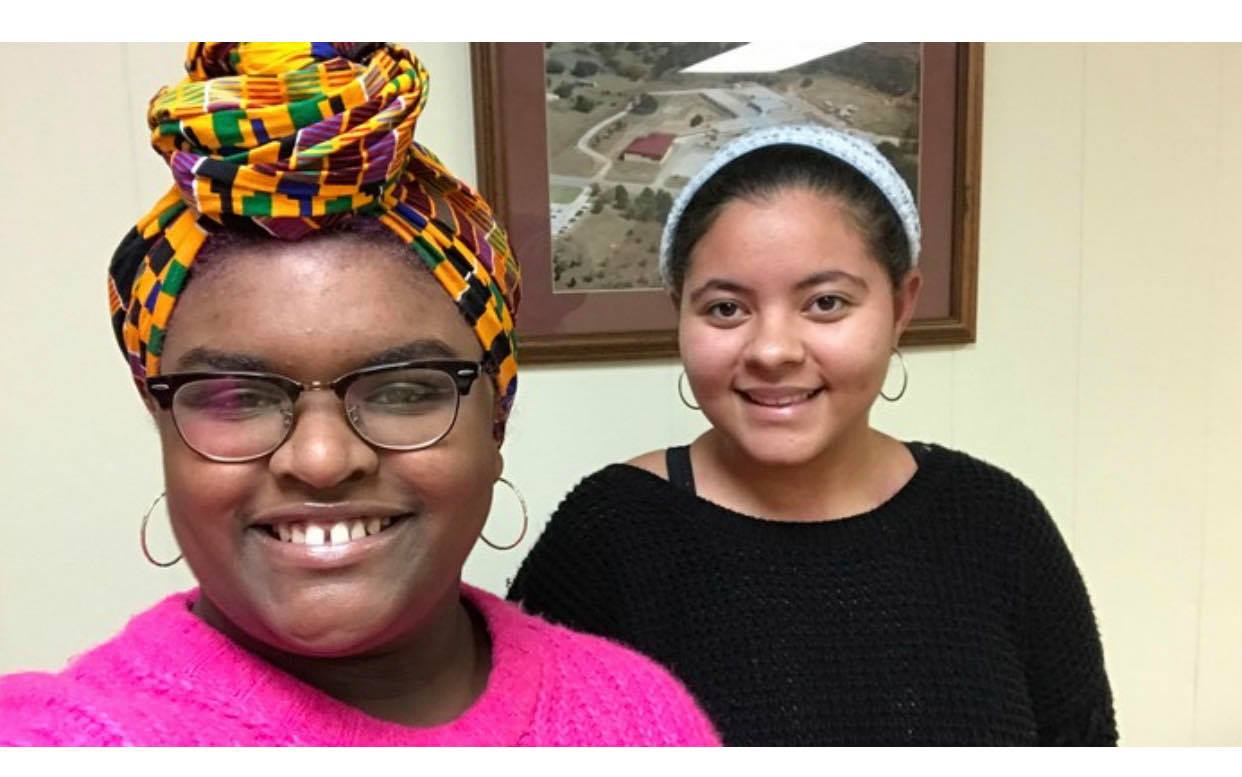
www.vice.com
Seniors Is’Abella Miller and Delanie Seals have been fighting their school’s “culturally and ethnically insensitive” head wrap ban since they were sophomores. A few months ahead of graduation, they’ve finally won.
The battle between two high school seniors and their school district in Oklahoma finally came to an end on Monday night following nearly two years of the students’ organizing efforts.
Since their sophomore year, Is’Abella Miller and Delanie Seals have been at odds with the administration at Byng High School in Ada, Oklahoma, over what they perceive to be a violation of their rights: a school rule that prohibited students from wearing African head wraps along with other forms of non-religious headwear.
At a meeting on Monday night, the school board issued a new rule allowing students to wear African head wraps along with other forms of headwear, but Miller and Seals describe the road to this moment as long and frustrating.
Byng High School is majority white and both Seals and Miller said that forbidding African head wraps signifies a bias among administrators.

Seals was first reprimanded for wearing a head wrap during her sophomore year in 2018 by the school’s then-principal Michael Tamez, but she refused to take it off.
“I told him no, and that it’s a part of my culture,” Seals told VICE the week before the hearing. “I then explained the history behind it. He Googled pictures of women in head wraps and told me he didn’t understand the point of it. He told me I can wear it for that day, but I continued to wear it even after that discussion.”
Seals and Miller said they were not approached about their head wraps again until the beginning of their junior year under Byng’s new principal, Trent Miller. The two students were each called into the principal’s office on separate occasions for their head wraps. After explaining that their head wraps were cultural, the administration initially told the two that they could wear them pending a discussion with the school board.
At this point, Seals and Miller requested a meeting with the superintendent, but they said their requests went unanswered. By October 2018, the principal told them that they could wear their head wraps, but only if they show some of their hair.
But the next semester Principal Miller called Seals and Miller into a meeting to tell them that he’d changed his mind. He’d decided that their head wraps were a violation of the school’s “no headwear” policy after all. The students decided not to wear them again until they could prepare their argument and have another meeting with the principal. In May, they finalized their talking points which included the history of dress codes as a means to force students to racially assimilate and citing the school’s anti-discrimination policy. But despite their efforts to schedule the meeting, they said Principal Miller never scheduled it.
Growing frustrated with little progress, Seals wore her head wrap again at the beginning of her senior year in August 2019. The administration responded by threatening her with in-school detention if she didn’t take it off. A few days later, Seals and Miller decided to wear their head wraps to school together, despite the consequences. “The headwear rule is culturally and ethnically insensitive and we decided we had to do something about it, even if that meant going to in-school detention,” Miller said. That’s exactly what it meant; the two spent an entire day in detention.
Since then, the two students have spent their first semester of their senior year in multiple meetings with the principal, superintendent, and school board. Their efforts culminated on Monday night during a board meeting where the board finally and officially decided to allow headwear. The new rule reads as follows:
Students may wear caps, hats, or any head coverings that are not distracting to the learning environment. Students will not be allowed to wear hoodies, sun glasses or anything that potentially hides their identity or obscures the vision of security cameras. Headwear that restricts or impairs other students’ vision in class may be asked to be removed or relocated within the classroom.
“We appreciate our students bringing the need to examine this policy to our attention and for working with district leaders to modify the policy in a way that respects students and recognizes the importance of maintaining a focused learning environment,” said Byng Public Schools Superintendent Todd Crabtree in a statement to VICE.
Seals and Miller said they were relieved to see that their two-year effort led to real change, but they’re still wary of the board’s decision.
“We’re happy that the policy is updating for us to be able to wear our headwear, but we’re worried about the word ‘distracting,’” said Miller. “We can’t help that our headwear is big. We feel it will be used as an excuse if we have a teacher that’s lowkey racist.”
How the administration will wield the rule remains to be seen, but Seals and Miller have already made an impact far beyond the halls of Byng High School. Since they started pushing their campaign on social media under the hashtag #headwrapsmatter and #myculturemysay, they’ve received an outpouring of support from students who attend schools where they’re not allowed to wear head wraps. Some have even considered using Seals and Miller’s success as a template.
“It’s amazing,” said Miller. “But it’s also sad at the same time that we’re all going through this—but that’s why we started this movement.”










